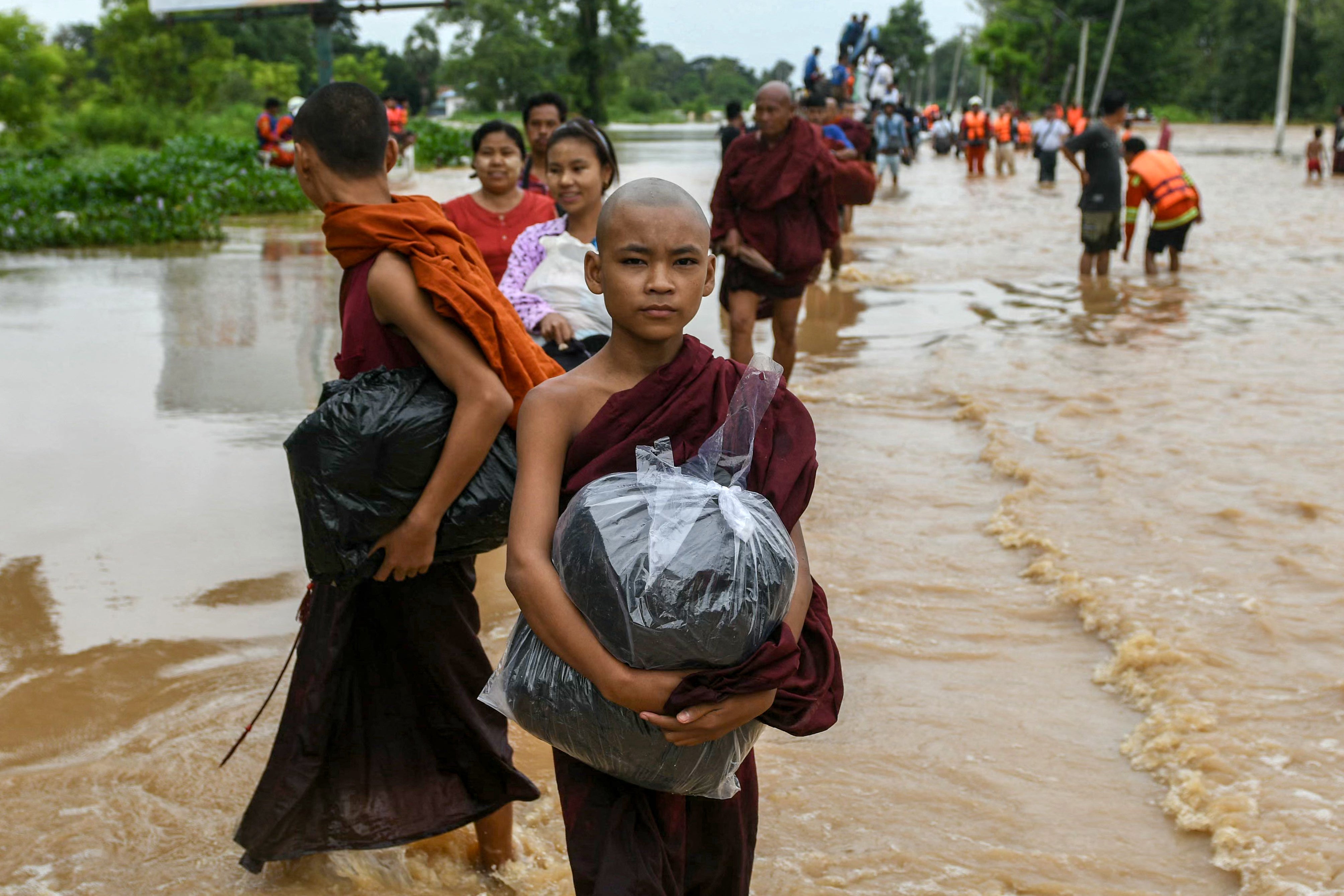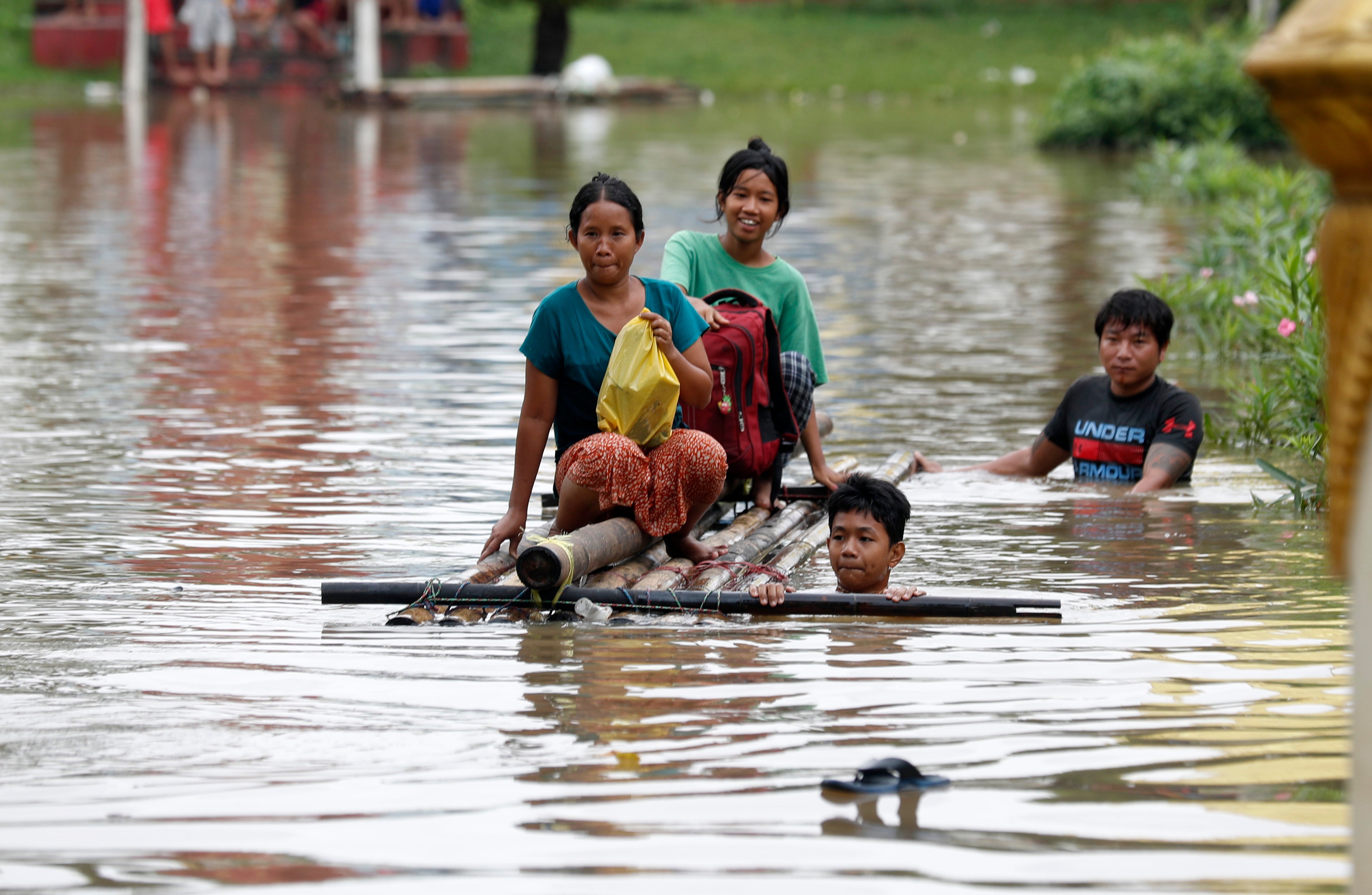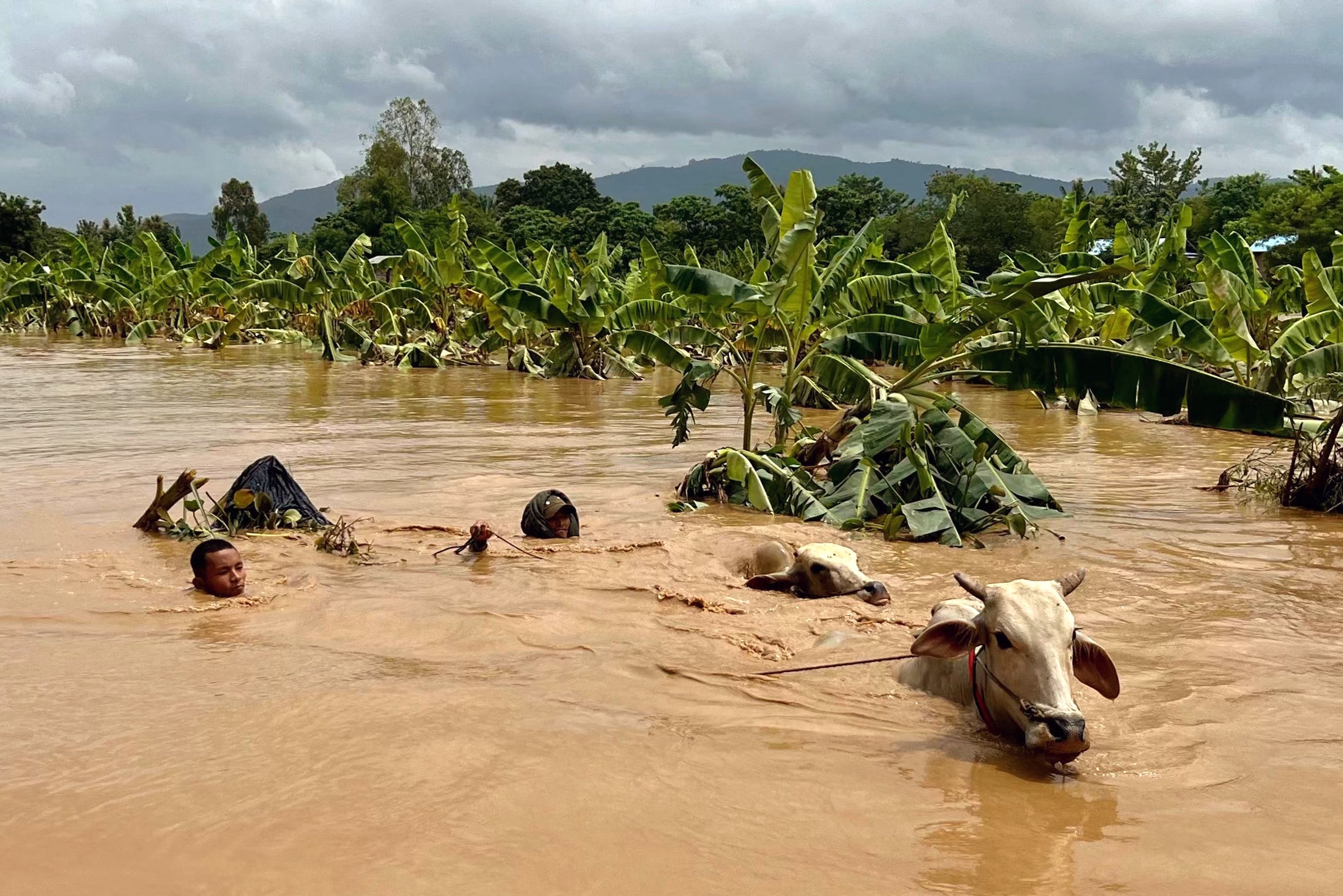Myanmar’s military-run government has issued a rare appeal for foreign aid after it was hit by Typhoon Yagi, the strongest storm to hit Asia this year, causing severe flooding and displacing thousands of people amid a crippling economic crisis.
The floods have killed at least 33 people in the country and displaced more than 235,000 people, the junta said.
But there are fears the actual death toll could be far higher, as the true scale of the devastation is only just emerging. Communication with much of the affected region has been cut off by landslides and heavy flooding.
Myanmar was one of the last countries to be hit by Yagi after it passed over the Philippines, China, Vietnam and Thailand, leaving a trail of destruction and killing at least 300 people.
Heavy flooding has hit the capital Naypyidaw, part of a roughly 162 sq km area worst-hit by a deluge on Thursday, according to satellite imagery analysis by the UN-backed Myanmar Information Management Unit (MIMU). Myanmar‘s second-largest city, Mandalay, has also been badly affected.

The disaster has exacerbated a host of challenges for a country gripped by civil war and in-fighting between ethnic groups since the military seized power in a coup in 2021. War has brought a crippling economic crisis and severely impacted exports.
“Officials from the government need to contact foreign countries to receive rescue and relief aid to be provided to the victims,” junta leader Min Aung Hlaing said on Friday, according to the state-affiliated Global New Light of Myanmar newspaper.
“It is necessary to manage rescue, relief and rehabilitation measures as quickly as possible,” he was quoted as saying.
The military has lost contact with some parts of the country and was investigating the reports of dozens of deaths and people buried in landslides in a gold-mining area in the central Mandalay region, according to a military spokesperson.
Pictures showed hundreds of villagers, including children, wading through chin-high waters in parts of the country to move to safer locations. People have been forced to take shelter in trees overnight to survive the raging flood water.

Boats and bamboo rafts were used to relocate people as houses were submerged in muddy waters.
The landslides and flooding have cut off roads and bridges and destroyed electricity towers, buildings and houses.
Myanmar’s rare call for help has come after the military previously blocked humanitarian assistance from abroad. About a third of Myanmar’s 55 million people survive on humanitarian assistance but many aid agencies, such as the International Committee of the Red Cross, have said they cannot operate in many areas because of access restrictions and security risks.
More than 2.6 million people have already been displaced because of the three-year civil war that has killed thousands of people. The UN’s Office for the Coordination of Humanitarian Affairs (OCHA) has said that more than 18.6 million people are in humanitarian need.
It said flooding would increase the spread of water-borne diseases and further stretch the availability of healthcare, with limited access to clean water and sanitation.

“They live with the fear of armed conflict and violence. The disruption of livelihoods is leaving countless people without the means to sustain themselves,” the ICRC’s president, Mirjana Spoljaric, said on Wednesday.
In 2008 when cyclone Nargis killed 138,000 people in Myanmar, the then-junta allegedly blocked emergency aid and was accused of refusing to grant access to humanitarian workers and supplies.
Last year, Myanmar suspended access to aid groups that tried to reach a million victims who were hit by powerful cyclone Mocha.








